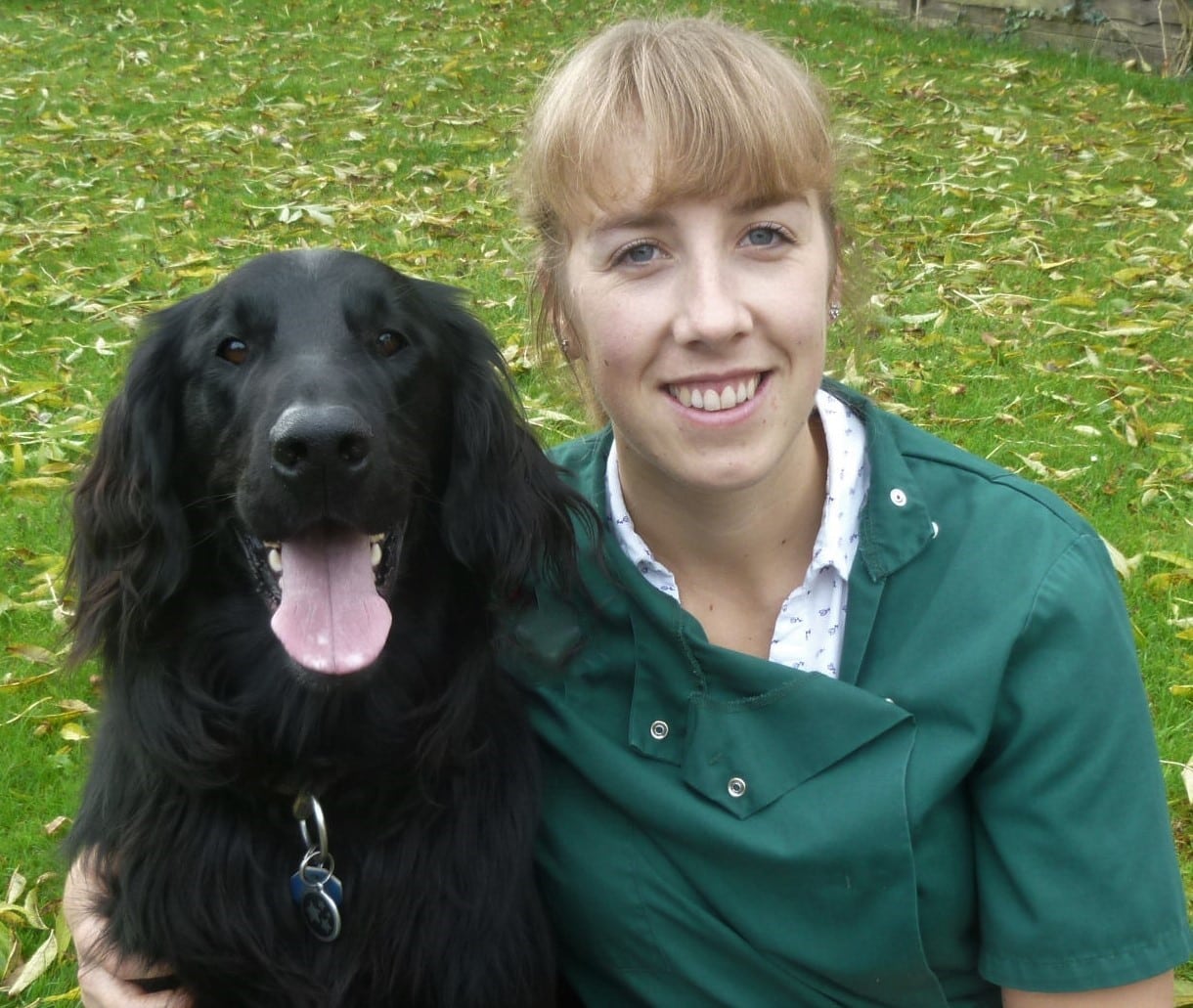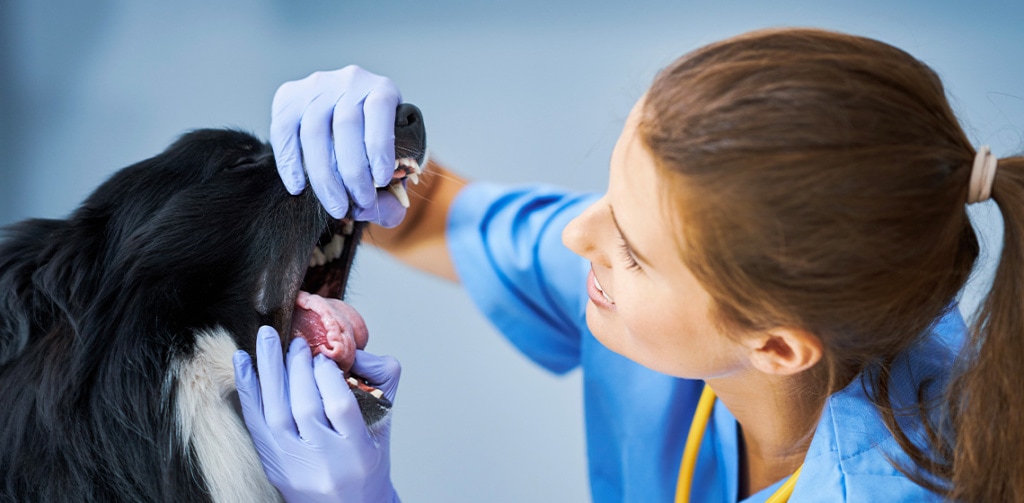It is rare that you will ever have to perform the Heimlich Maneuver in your pet, but if an emergency were to arise then knowing how to do it could prove life-saving. Choking can occur due to several reasons, and it’s worrying when it happens, so here we explore the possible causes and actions you should take.
Severity:
Severe
Table of Contents
Key points
- Choking is an emergency situation
- You may need to administer treatment at home
- The Heimlich maneuver helps to expel an object out of the airway
- Get your dog checked over by a veterinarian as soon as possible afterward
- Avoid giving your dog hard food items or inappropriately sized balls to play with
Common in:
Any breed or age, but particularly brachycephalic (flat-nosed breeds)
Symptoms and types:
Choking in dogs can be quite a scary event and the symptoms are like those seen in people, including
- Coughing to try and shift the blockage
- Difficulty breathing
- Pawing at their face and mouth
- Looking panicked and distressed
- Collapse
- Death
In many cases, the object causing the obstruction is shifted through coughing or retching, and your dog will be fine afterward. But if the object is stuck tight or is occluding the airway completely, then your dog may start to struggle for oxygen. This can lead to fainting (loss of consciousness) and collapse, and possibly death if treatment isn’t sought immediately.
Choking is different to reverse sneezing which can be seen in dogs and doesn’t usually require treatment.
Choking occurs more frequently in brachycephalic breeds (flat-faced) such as pugs and bulldogs.
Understanding the diagnostics
If the item cannot be easily retrieved, or if there is concern about damage following the event, then an examination under anesthetic may be required along with additional diagnostics such as X-rays and ‘bronchoscopy’ (a small camera passed down the airway).
Learning about the causes
The most common causes of choking are swallowing food items without appropriate chewing, firm food items like bones or bone fragments, broken bits of toys, and rounded objects like balls. Balls that are too small for the breed of dog are more likely to cause problems. You should also choose an appropriate kibble size for smaller breed dogs to help reduce choking risks.
Choking occurs more frequently in brachycephalic breeds (flat-faced) such as pugs and bulldogs. This is because they have an increased amount of soft tissue in the back of the throat and a more narrowed trachea (windpipe) than other breeds.
If your dog is lying down or collapsed then put one hand on their back and use your other hand to firmly push the abdomen towards the spine, again in a sharp thrusting motion to try and dislodge the item.
Best treatment options
If your dog is choking, this is an emergency situation and you may need to take some action at home.
- First look inside their mouth to see if you can see an object or physical blockage. Try and grab it swipe it aside with your fingers. You may need someone else to hold your dog’s mouth open whilst you do this.
- If you are unable to see an object or you can’t reach it then get your dog to an emergency vet as soon as possible and/or try the Heimlich maneuver.
The Heimlich maneuver
Small dogs – Hold your dog on your lap, with them lying on their back (feet in the air). Use the palm of your hand to apply firm pressure upwards and inwards beneath the ribcage. Do this five times in a thrusting motion to try and force air up from the lungs to dislodge the object. Roll your dog over and check its mouth for the offending object.
Medium and Large dogs- In larger-sized dogs, you will need to perform the maneuver much as you would in people. If your dog is standing, wrap your arms around them so that your hands join together at their abdomen just under the ribcage. Make a fist with your hands and thrust them upwards and forwards five times to try and force the object out of your dog’s airway. Check your dog’s mouth to see if the item has been dislodged.
If your dog is lying down or collapsed then put one hand on their back and use your other hand to firmly push the abdomen towards the spine, again in a sharp thrusting motion to try and dislodge the item.
Regardless of whether you’ve successfully removed the object, you should get your dog checked by a vet as soon as possible afterward
Home remedies and their effectiveness
As described previously, you may need to administer emergency treatment at home. There may not be enough time to get your dog to a veterinarian if your dog is struggling to breathe. Don’t be frightened to be quite firm when performing the Heimlich maneuver, as it will be more effective than with tentative thrusts. Remember that an accidentally broken rib will heal, a dog that is struggling to breathe won’t.
When to see a vet
You should try and get your dog to an emergency veterinarian as soon as possible. If the item cannot be readily dislodged at home then an emergency tracheostomy at the vets may be required.
If your dog has stopped choking, you should still take them to a vet for a check-up. Depending on how long they were choking, there could have been severe oxygen deprivation. Your vet may also need to assess your dog’s throat under sedation or anesthetic to look for any trauma that may have occurred during the choking incident. Sometimes X-rays may be taken or a bronchoscopy performed, whereby a small camera is passed down your dog’s airway.
FAQ
- Check their mouth for the object causing an obstruction
- If you can’t remove the object, perform the Heimlich maneuver or get your dog to an emergency vet immediately
- Get your dog checked by a vet as soon as possible, even if they seem fine
Stay calm! Check his mouth, first of all, to see if you can swipe the object out with a finger. If not then you may need to perform the Heimlich maneuver especially if your nearest vet is more than a minute or two away. Get your pet to a veterinarian as soon as possible afterward to get them checked over.
How to perform the Heimlich depends on the size of dog. Small breed dogs lay them on their back on your lap, put the palm of your hand on their abdomen, and perform firm upward thrusts towards the ribcage. For large dogs, wrap your arms around them as they are standing and use your hands in a fist to perform upward thrusts to expel the object.

Rebecca is a companion animal vet who has always had a passion for writing and client communication. Since her graduation from the Royal Veterinary college in 2009, she has gained a wealth of experience in first opinion small animal practice, in both clinical and managerial roles. She currently works in the South West and deals with a variety of routine and emergency appointments, but particularly enjoys medicine cases. Outside of work and writing, she enjoys spending time with her family, including her bouncy flat-coated retriever George!








